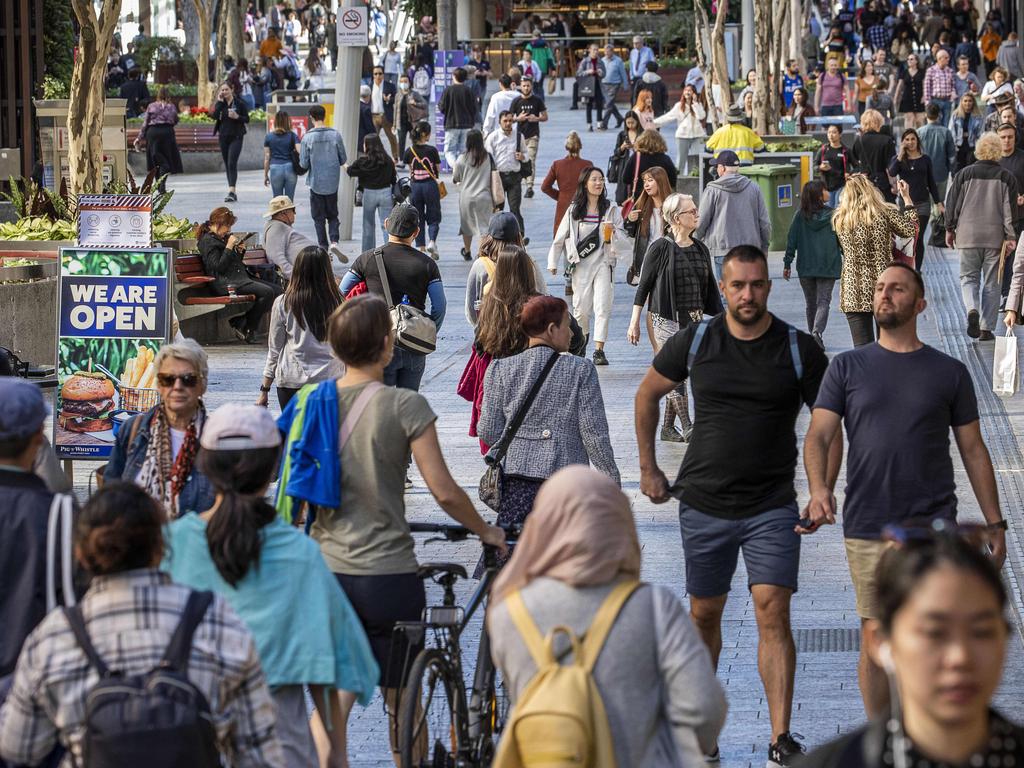Look, we’re pretty safe from COVID-19 – let’s not kill our economy
Lockdowns have wrecked millions of businesses and young people face chronic unemployment and lost opportunities for years.

As British historian David Starkey observed in late May: “What is peculiar about COVID-19 is that it’s not a very serious disease … (yet) we’ve committed economic suicide … the damage it has done is self-inflicted.”
Never has the world spent — and restricted peacetime freedoms — so much, for so long, in the name of safety. Six months in and more than 600,000 have died, but this remains a fraction of the millions of deaths the flu pandemics caused in the late 1950s and 60s in a smaller world. And governments and media didn’t terrify people and induce the biggest recession in a century.
Victorian Premier Daniel Andrews, whose state is in the middle of a three-month lockdown costing at least $1bn a week, told a transfixed nation on Sunday three people in their 90s had died from COVID-19. Millions would need to wear face masks indefinitely.
So why is the response so different this time? Deaths in the US from COVID-19 passed 140,000 this week. In a single month, October 1918, the Spanish flu, which killed about 50 million globally, claimed 194,000 American lives.
Mining fields in Kentucky buried 10 per cent of their young workers, according to research by Howard Bodenhorn published this month. The Metropolitan Life Insurance company found 3.3 per cent of all insured industrial workers aged between 25 and 45 died.
The lethality of the coronavirus isn’t in the same ballpark, yet economies have endured restrictions tougher than anything back then. Months of lockdowns have wrecked millions of businesses and young people face chronic unemployment and lost opportunities for years, quite aside from the deaths recessions cause.
Our wealth, the perverse interaction of traditional and social media, and the decline of religion must figure as three explanations.
Safety is a luxury previous generations couldn’t afford. Even compared with the late 60s, Americans and Australians are many more times wealthier today. Whether you think governments have overreacted or not, we can better afford to. Compulsory mask-wearing and mandatory lockdowns are extreme extensions of proliferating occupational health and safety laws, which themselves have inculcated the expectation that governments, rather than individuals, must look out for us.
Second, a traditional media shorn of its advertising revenues has had to attract eyeballs like never before. A recent research note by Chicago investment firm David Capital Partners declared bias of the news reporting “astonishing”.
“Our most trusted media outlets have resorted to the yellow journalism of a century ago, printing hyperbolic and misleading headlines in search of clicks and eyeballs. Political leaders have ignored evidence-based science in a race to appear tough on the virus,” it said. Much of the media has largely ignored studies and experts questioning the catastrophe or the proportionality of responses.
Some economists at Harvard University last week suggested that hospital admissions as a share of infected patients might be a misleading indicator, concluding the undetected rate of infection was “very high”. “At least 80 per cent of infected individuals were ineligible for medical testing, even after the medial system broadened its criteria,” they concluded, based on Iceland’s experience.
That suggests it would be most ill-advised for NSW to follow Victoria down this extreme path of further lockdowns, given the virus is likely far more prevalent than official infection rates suggest.
The president of Iran, one of the nations first afflicted by the virus, at the weekend suggested 25 million, or almost a third of the country, might be infected with coronavirus. If that’s true the infection fatality rate there is about 0.0006 per cent.
The latest harbinger of doom is said to be the surge in infections in some US states and in Victoria, which typically are reported without context about the much younger age of those being infected and the collapse in death rates. At the same time as parts of an often weakened traditional media fight for attention, a shrieking social media has made it easier for biased stories to spread, and much harder for leaders to make the tough decisions they once would have. When any death becomes their fault in the court of public opinion, you can be sure the temptation to use other people’s money to try to stop it will be irresistible.
And God, or rather a declining faith in Him, may explain much as well. If a less religious population is more fearful of dying, it naturally wants to devote more resources to living longer. Indicators of religious belief are much lower now than during the last pandemics.
Rather, coronavirus restrictions, which have little or any scientific basis, have taken on a religious hue. Public health officials have become the high priests bringing down arbitrary rules, sometimes with little basis in science. Scientists have long debated the efficacy of lockdowns and masks, for instance, although you wouldn’t realise that from some of the media. Meanwhile, those who are increasingly being dubbed “Karens”, the sort of folk who centuries ago hunted out “witches”, gleefully shame those who don’t comply to the nth degree.
Since the pandemic erupted this year, understandably generating extreme fear that justified caution, the flow of analysis has largely been good. On every measure the virus has proved less lethal than first thought.
Keynes might have changed his mind with the facts but governments and their catastrophist cheer squad, typically in comfortable employment, unfortunately have not. The French prime minister this month ruled out another national lockdown in a “second wave”, citing the massive economic and social costs. Norway will not lockdown again as it did. It’s all too late now, and diagnosing the explanation offers little hope for a better response next time.






The “pursuit of safety stands against every great and noble enterprise”, Roman historian Tacitus once remarked. He, and indeed every generation since, would be shocked by the response to this new coronavirus.